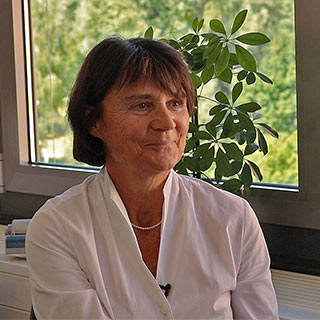2021-07-30
Expert talk with Mrs. Professor Deininger about municipal wastewater treatment

This means, efficient thickening and dewatering is very useful in terms of energy and economy. We do not want to drive water along the road, after all.Prof. Dr.-Ing. Andrea Deininger Professor Deininger is the dean of the faculty for civil engineering and environmental technology of the university of Deggendorf. Furthermore, she is a member of the committee AK 5 of the German Association for water economy, wastewater and waste. She has extensive experience in planning wastewater treatment plants, having been working in this business for more than eleven years.
Power demand
Power demand of wastewater treatment plants is a frequently discussed topic. In your eyes, what is the current situation in Germany like?
I would say, compared to other countries, cleaning efficiency in Germany is very good. We have very high requirements, so our wastewater is optimally cleaned. However, there is of course potential for optimizing.
Which saving potentials are actually possible?
The situation is as follows: Where most of the energy is consumed, there is the highest saving potential. In sludge treatment, there are also potentials for saving.
Also in the media, the production of usable energy such as electricity, heat and water is frequently discussed. Which current examples do you know from your work?
In former times, people assumed that to do so, the sewage plant must have a certain size. Today, more and more anaerobe sludge treatment systems are installed, i.e. digestion systems, also in small facilities.
Power demand of wastewater treatment plants is a frequently discussed topic. In your eyes, what is the current situation in Germany like?
I would say, compared to other countries, cleaning efficiency in Germany is very good. We have very high requirements, so our wastewater is optimally cleaned. However, there is of course potential for optimizing. There are examples for small facilities which have been optimized using compact digestion. For sludge drying, there are also innovative ideas, e.g. heat storage and heat recovery. In addition, the production of hydrogen from digester gas would be possible. There are many possibilities.
Phosphor recovery
By 2029, the operators of waste-water facilities of more than 100,000 population equivalents have to ensure the recovery of phosphor form sewage sludge. Please explain to us why phosphor recovery is so important.
Phosphor is a nutrient. We need phosphor, first and foremost as fertilizer for the production of food or animal feed. The problem is that the resources of phosphor are limited. Therefore, someday, phosphor will not be available anymore. Moreover, these phosphates are often contaminated with heavy metals. This means that we will have to find new ways to recover phosphor. So the following idea was born: Sewage sludge contains a lot of phosphor. So we have to recover this phosphor from sewage sludge.
What is the current situation like in Bavaria?
There are many processes. The problem is that they are all complex. These are wet chemical and thermochemical processes. We are still in a state of research and development. As far as I know, there isn’t any unit for phosphor recycling on industrial scaled in Bavaria. There are some pilot plants, e.g. the sewage plant in Neuburg on the Danube and in Baden-Württemberg, there are pilot plants in Göttingen where they analyze different processes.
Fourth cleaning stage
A topic we have to deal with time and again are trace elements in water circulation, which in the end come back into the water circulation after wastewater treatment, thus having an impact on our drinking water. Which are the effects of removing them in the long term?
The long-term effects are as follows: They accumulate in the aquatic environment. They are bio cumulative and persistent, consequently, they are not degraded by nature and are conveyed from wastewater to the recipient, from the recipient to the ground water, from the ground water to drinking water and from drinking water to humans.
How important is the implantation of a fourth cleaning stage?
It depends of course on the size of the wastewater treatment plant. It also depends on the quality of the recipient, i.e. how porous the geologic characteristics are and if there is karst or if the water flows from the recipient directly into the ground water. However, the fourth cleaning stage is highly important for large wastewater treatment plants.
Could you list the most usual processes in this sector? Which is the most common one?
In this sector, there are three or four processes. We could say that the mixture of ozonization and activated carbon is the most common process.
Sludge treatment
Which aspects will be in the focus regarding sludge treatment? Are there any trends besides cost reduction?
If you consider that in Bavaria 80% of the sewage sludge is treated thermally, the most important aspect is logistics: Sewage sludge gets on the road, because it has to be transported to the incineration and thus, the costs for disposal of the sewage sludge arise to 100 € per ton which is quite usual. This means, efficient thickening and dewatering is very useful in terms of energy and economy. We do not want to drive water along the road, after all.
Which is your advise for operators of waste-water treatment plants who want to increase their efficiency?
Energy checks and energy analysis can help. The question is: Do we have sludge thickening or dewatering? Does it make sense to install a stationary sludge dewatering unit? Can we establish a cooperation with other municipalities? Maybe a mobile sludge dewatering unit arriving every few months is more efficient? There are many points in sludge thickening and dewatering to be considered and analyzed.
